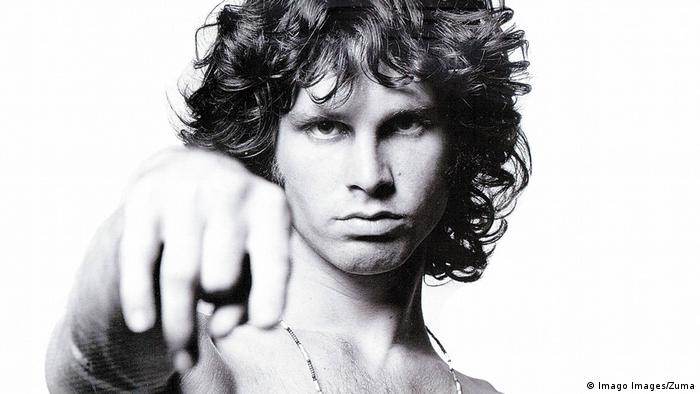In the realm of rock music, tales of legend and lore are woven into the fabric of history, resonating with both the artists and fervent enthusiasts.
Among these narratives, there exists a riveting chapter involving none other than Jim Morrison, the enigmatic frontman of The Doors.
This saga unfolds during a momentous performance at the New Haven Arena in Connecticut in 1967, when Morrison found himself arrested on stage.
Venturing into the heart of this story is Robby Krieger, a crucial member of The Doors, who offers his distinct perspective on this remarkable event. In a poignant contribution to Literary Hub, Krieger embarks on an evocative recounting:
“The infamous New Haven concert is invariably recounted whenever our band’s history is revisited, and it seems fitting that I should now share my side of the story here. Perhaps it’s time for me to shoulder my portion of the narrative,” he introspects.
“As 1967 wound down, our trajectory soared high—our anthem ‘Light My Fire’ had cast an incandescent glow over the summer months, and by autumn, our second album, ‘Strange Days,’ took its place in the upper echelons. Simultaneously, Jim’s tumultuous relationship with alcohol paralleled our rise, prompting our band and crew to vigilantly shepherd him towards sobriety, at least on performance nights,” Krieger reflects.
Krieger proceeds to unravel the sequence of events leading to the climactic moment: “On December 9, 1967, the mantle of sobriety had fallen upon me. Jim and I dined quietly with our respective companions before our Connecticut concert in New Haven. Jim’s imbibing didn’t exceed his typical intake, which, by conventional standards, was already considerable. Yet, I was still grappling with the puzzle of guiding Jim towards moderation. Reasoning proved ineffective. Silence yielded no results. Encouragement met a similar fate. On that fateful night, I tried a gentle prod: ‘Are you certain about your choice?’ accompanied by, ‘Come on, man, we’re due on stage in two hours.’ Alas, my attempt fell short yet again.”
Krieger’s narrative delves deeper into the unfolding drama: “Later that night, the reverberation of Jim’s cries reached my ears. We rushed out to witness Jim locked in a fierce exchange with law enforcement, the verbal volley echoing back and forth. Amidst the tumult, the truth emerged—Jim had been sharing a moment of intimacy with his companion in a restroom, when a police officer, misled by appearances, confronted him as an intruder. Jim’s alleged disdainful response led to a police officer dousing him with pepper spray. The account seemed entirely credible, given Jim’s propensity for tête-à-têtes with law enforcement, and their readiness to capitalize on any pretext.”
Krieger then delves into the actual performance: “It was this eventful evening that set the stage for our performance—or at least the segment we managed to execute. If anything, the pepper spray might have rendered Jim more coherent. During ‘Back Door Man,’ Jim launched into his trademark narrative about the ‘little blue man in the blue suit with the blue cap,’ who had momentarily blinded him backstage. […] Soon, we found ourselves besieged. A police lieutenant ascended the stage, and Jim extended the microphone to him, quipping, ‘Speak your piece, man.’ Even then, my anxiety was tempered. What recourse did they have—arrest him? Onstage? Mid-performance? For recounting an entirely factual incident? Unbelievably, yes. The police apprehended him, and the audience erupted. Ray [Manzarek], John [Densmore], and I stood in stunned disbelief.”
Krieger details the swift actions of Bill Siddons, their tour manager at the time: “He leapt onto a police officer’s back, bellowing, ‘Leave him alone!’ As Ray, John, and I joined the fray offstage, Jim was already ensconced in a police vehicle. Bill had shifted his focus to shielding our equipment from the fervent crowd. This marked an unprecedented moment in history—a musical artist being arrested onstage during a live performance,” Krieger muses.
“Frozen by shock, we can hardly be faulted for not knowing how to react.” Thankfully, a sequence of phone calls ensued: “Our managers alerted our attorney, who subsequently communicated with the police, leading to Jim’s release on bail, covered by Bill from the night’s earnings.”
“In the ensuing weeks, this incident was meticulously chronicled in a Life magazine article, embellished with captivating moment-by-moment photographs. Ironically, the police inadvertently detained a Life reporter, a Village Voice jazz critic, and a photographer in their frenzy. This inadvertent act aligned the press staunchly in our favor, etching Jim’s arrest indelibly in history’s pages. The article and images were met with satisfaction. Jim emerged as a principled rebel, while the police assumed the role of rigid caricatures. This sentiment transcended rebellious youth; even my parents stood in solidarity after reading the story,” Krieger concludes, closing a chapter that continues to resonate with its unique blend of rock drama and historical impact.

